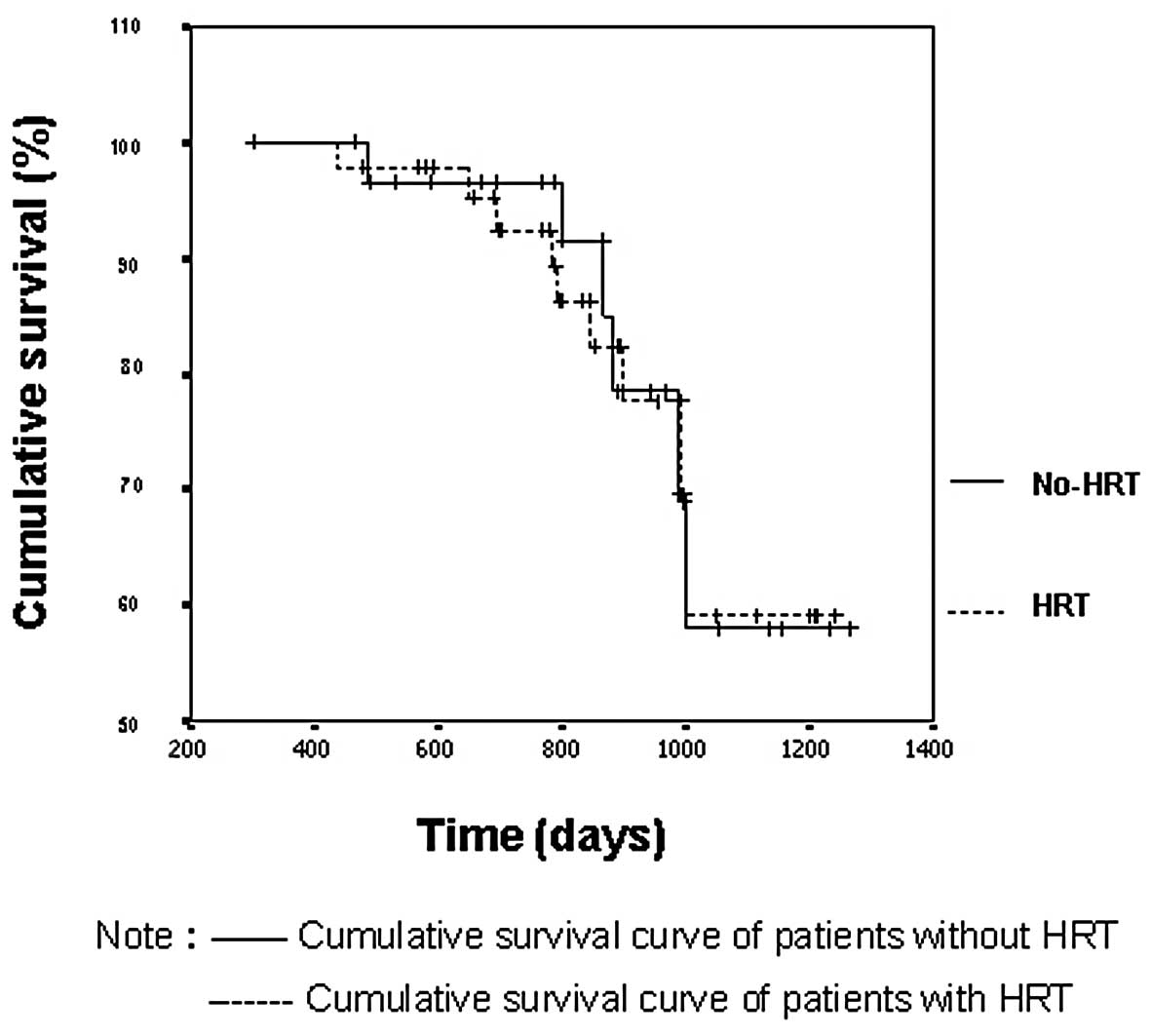|
1
|
Williams T, Toups KL, Saggese D, et al:
Epithelial ovarian cancer: disease etiology, treatment, detection,
and investigational gene, metabolite, and protein biomarkers. J
Proteome Res. 6:2936–2962. 2007. View Article : Google Scholar : PubMed/NCBI
|
|
2
|
Jacobs IJ and Menon UM: Progress and
challenges in screening for early detection of ovarian cancer. Cell
Proteomics. 3:355–366. 2004. View Article : Google Scholar : PubMed/NCBI
|
|
3
|
Mok SC, Kwonga J, Welch WR, et al:
Etiology and pathogenesis of epithelial ovarian cancer. Dis
Markers. 23:367–376. 2007. View Article : Google Scholar : PubMed/NCBI
|
|
4
|
Lawrenson K and Gayther SA: Ovarian
cancer: a clinical challenge that needs some basic answers. Plos
Med. 6:126–129. 2009. View Article : Google Scholar : PubMed/NCBI
|
|
5
|
Deraco M, Baratti D, Laterza B, et al:
Advanced cytoreduction as surgical standard of care and
hyperthermic intraperitoneal chemotherapy as promising treatment in
epithelial ovarian cancer. Eur J Surg Oncol. 37:4–9. 2011.
View Article : Google Scholar
|
|
6
|
Hopkins ML, Fung MF, Le T, et al: Ovarian
cancer patients and hormone replacement therapy: a systematic
review. Gynecol Oncol. 92:827–832. 2004. View Article : Google Scholar : PubMed/NCBI
|
|
7
|
Singh P and Oehler MK: Hormone replacement
after gynaecological cancer. Maturitas. 65:190–197. 2010.
View Article : Google Scholar : PubMed/NCBI
|
|
8
|
Chikman B, Lavy R, Davidson T, Wassermann
I, Sandbank J, Siegelmann-Danieli N and Halevy A: Factors affecting
rise in the incidence of infiltrating lobular carcinoma of the
breast. Med Assoc J. 12:697–700. 2010.PubMed/NCBI
|
|
9
|
Braem MG, Onland-Moret NC, van den Brandt
PA, et al: Reproductive and hormonal factors in association with
ovarian cancer in the Netherlands cohort study. Am J Epidemiol.
172:1181–1189. 2010. View Article : Google Scholar : PubMed/NCBI
|
|
10
|
Zhou B, Sun Q, Cong R, Gu H, Tang N, Yang
L and Wang B: Hormone replacement therapy and ovarian cancer risk:
a meta-analysis. Gynecol Oncol. 108:641–651. 2008. View Article : Google Scholar : PubMed/NCBI
|
|
11
|
Hinds L and Price J: Menopause, hormone
replacement and gynaecological cancers. Menopause Int. 16:89–93.
2010.PubMed/NCBI
|
|
12
|
Taube M, Hockenstrom T and Isakasson M:
Low sex steroid environment affects survival and steroid secretion
of ovarian tumor cell in primary cultures. Int J Oncol. 20:589–594.
2002.PubMed/NCBI
|
|
13
|
Mabuchi S, Ohmichi M, Kimura A, et al:
Estrogen inhibits paclitaxel-induced apoptosis via the
phosphorylation of apoptosis signal-regulating kinase 1 in human
ovarian cancer cell lines. Endocrinology. 145:49–58. 2004.
View Article : Google Scholar : PubMed/NCBI
|
|
14
|
Seeger H and Mueck AO: The effect of
estradiol metabolites and progestogens on the proliferation of
human ovarian cancer cells. Panminerva Med. 48:13–17.
2006.PubMed/NCBI
|
|
15
|
Zheng H, Kavanagh JJ and Hu W: Hormonal
therapy in ovarian cancer. Int J Gynecol Cancer. 17:325–330. 2007.
View Article : Google Scholar
|
|
16
|
Levgur M: Estrogen and combined hormone
therapy for women after genital malignancies. J Reprod Med.
49:837–848. 2004.PubMed/NCBI
|
|
17
|
Aaronson NF, Ahmedzai S, Bergman B, et al:
The European Organization for Research and Treatment of Cancer
QLQ-C30: a quality of life instrument for use in international
clinical trials in oncology. J Natl Cancer Inst. 85:365–376. 1993.
View Article : Google Scholar : PubMed/NCBI
|
|
18
|
Zhong-Mian P, Li L, Xinqiu C, et al:
Effect of HRT for the quality of life in patients with gynecologic
malignancies of reproductive age. Guangxi Yikedaxue Xuebao.
23:921–923. 2006.
|
|
19
|
Eeles RA, Tan S, Wiltshaw E, et al:
Hormone replacement therapy and survival after surgery for ovarian
cancer. BMJ. 302:259–262. 1991. View Article : Google Scholar : PubMed/NCBI
|
|
20
|
Li L, Gao K, Zhang W, et al: Effects of
estradiol and progesterone on ovarian cancer cell line. Zhonghua
Zhongliu Zazhi. 25:553–554. 2003.
|
|
21
|
Landon SP, Crew AJ, Ritchie AA, et al:
Growth inhibition of oestrogen receptor-positive human ovarian
carcinoma by antioestrogens in vitro and in a xenograft model. Eur
J Cancer. 30A:682–686. 1994. View Article : Google Scholar : PubMed/NCBI
|
|
22
|
Bodurka-Bevers D, Basen-Engquist K,
Carmack CL, et al: Depression, anxiety, and quality of life in
patients with epithelial ovarian cancer. Gynecol Oncol. 78:302–308.
2000. View Article : Google Scholar : PubMed/NCBI
|
|
23
|
Biglia N, Mariani L, Marenco D, et al:
Hormonal replacement therapy after gynaecological cancer. Gynakol
Geburtshilfliche Rundsch. 46:191–196. 2006. View Article : Google Scholar : PubMed/NCBI
|
|
24
|
Biglia N, Gadducci A, Ponzone R, et al:
Hormone replacement therapy in cancer survivors. Maturitas.
48:333–346. 2004. View Article : Google Scholar : PubMed/NCBI
|
|
25
|
Wenzel LB, Huang HQ, Armstrong DK, et al:
Health-related quality of life during and after intraperitoneal
versus intravenous chemotherapy for optimally debulked ovarian
cancer: a Gynecologic Oncology Group Study. J Clin Oncol.
25:437–443. 2007. View Article : Google Scholar
|
|
26
|
Ponzone R, Biglia N, Jacomuzzi ME, et al:
Vaginal oestrogen therapy after breast cancer: is it safe? Eur J
Cancer. 41:2673–2681. 2005. View Article : Google Scholar : PubMed/NCBI
|
|
27
|
Bebar S and Ursic-Vrscaj M: Hormone
replacement therapy after epithelial ovarian cancer treatment. Eur
J Gynaecol Oncol. 21:192–196. 2000.PubMed/NCBI
|
|
28
|
Ursic-Vrscaj M, Bebar S and Zakelj MP:
Hormone replacement therapy after invasive ovarian serous
cystadenocarcinoma treatment: the effect on survival. Menopause.
8:70–75. 2001. View Article : Google Scholar : PubMed/NCBI
|















